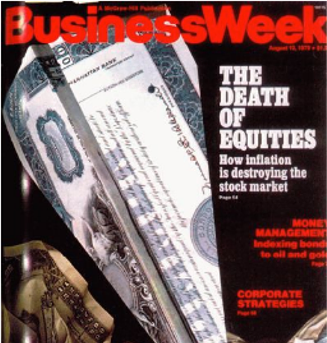Baby boomers are by far one of the wealthiest generations the world has ever seen.
The fact that there are more than 70 million people in this demographic helps but it’s also true that this is one of the luckiest generations in history when it comes to returns on financial assets.
These are the total returns on stocks, bonds and housing1 since 1983:
- Stocks +7,930%
- Bonds +1,060%
- Housing +515%
Those are annual returns of 11.4%, 6.2% and 4.6%, respectively.
If you had simply left your money in a savings account this whole time, you would have been up nearly 300%.
Obviously, none of these returns include transaction costs, fees, taxes and the behavioral frictions that can reduce investment performance.
But this has been arguably the greatest 40-something-year period in the history of financial markets and the baby boomer generation has benefitted mightily.
A 60/40 portfolio of U.S. stocks and bonds2 returned 14.5% per year(!!!) from 1980-1999. That’s nearly 15% annual returns for two whole decades with 40% of your money sitting in boring old in bonds.
That’s a high number for two years, let alone two decades.
From 1980 through 2022 (a year in which bonds had their worst year ever) that same 60/40 portfolio was up 9.7% annually.
The long-term return for U.S. stocks over the past 100 years or so was 9.7% per year. So you could have gotten the same long-run return of the stock market over the past 40+ years and done so at something like 50% of the historical volatility of equities.
Never say never when it comes to the markets. But I doubt we will ever see a run like this again in the future for this long, especially when it comes to the bond market.
Combine this with the fact that housing prices are up more than 500% since the early 1980s and it seems like shooting fish in a barrel to build wealth for the baby boomers.
And now that boomers have seen ridiculously above-average returns on financial assets, they have the ability to invest their safe assets at 5% T-bill yields for retirement.
The timing could not have been better.
Add to this the fact that housing prices were so much lower back then and this demographic wasn’t dealing with student loans and it seems like the boomers had it easy.
It is true the baby boomers have lived through possibly the most fortuitous financial lifecycles ever.
But it’s much easier to look back with the benefit of hindsight to see how lucky they were.
Most of the baby boomers came into the job market in the 1970s, a period of crushing inflation with low economic growth and a stagnating stock market.
No one wanted to invest back then. This is from the infamous BusinessWeek Death of Equities story in 1979:
Further, this “death of equity” can no longer be seen as something a stock market rally–however strong–will check. It has persisted for more than 10 years through market rallies, business cycles, recession, recoveries, and booms. The public was first drawn to equities in big numbers in the 1950s by a massive promotion campaign by Wall Street that worked because the economic climate was right: fairly steady growth with little inflation. To bring equities back to life now, secular inflation would have to be wrung out of the economy, and then accounting policies would have to be made more realistic and tax laws rewritten. But these steps may not be enough.
Although the early-1980s saw the 401k and individual retirement account (IRA) burst onto the scene, the barriers to entry were much higher back then. It wasn’t as easy as clicking a few buttons, linking your bank account and putting your money to work in the stock market like it is today.
If they wanted to buy a house in the early 1980s, they were met with 15-20% mortgage rates.
They dealt with the Black Monday crash in 1987 that saw the stock market fall more than 20% in a single day. People at the time thought we were headed for another depression.
The early-1990s recession has been forgotten historically but before the 2008 crash it was the last time housing prices fell on a national level.
The 1980s and 1990s bull market was an unbelievable run but it was followed by the lost decade of the 2000s that included two separate 50% crashes in the stock market. The Great Financial Crisis saw the entire financial system on the brink of collapse.
While there was a bull market in stocks in the 2010s, bond yields were so low that it made for a difficult environment for diversified investors.
We’ve now had two bear markets in the span of three years from the pandemic as well.
Historical returns and charts will always look easier with the benefit of hindsight than they do for those who actually lived through those ups and downs.
There is more luck involved in financial outcomes than most of us would like to admit. No one gets to choose when they are born or the circumstances they are born into.
Good or bad, right or wrong, none of us have control over what the financial markets will do during our investment lifecycle.
Future generations likely won’t experience these kinds of gains so you focus on what you can control, build a margin of safety into your financial plan and make course corrections along the way.
Michael and I discussed timing, luck, interest rates and more on this week’s Animal Spirits video:
Subscribe to The Compound so you never miss an episode.
Further Reading:
The $70 Trillion Wealth Transfer
Now here’s what I’ve been reading lately:
Research tools:
1S&P 500, Barclays Aggregate Bonds Index and Case-Shiller National Housing Index.
2S&P 500 and 10 year treasuries.
